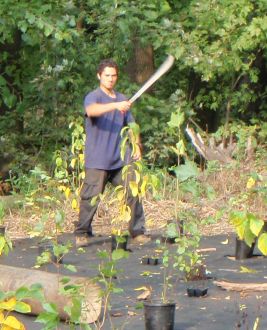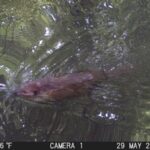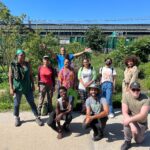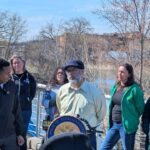During 2008 two interns, David Ocasio and Juan Vega, worked alongside the conservation crew. People often refer to our crew as the river rats, but most rats found in our city are not indigenous or native. On the other hand muskrats are native and we have a park in the Bronx honoring this animal called Muskrat Cove. Therefore we would like our interns to be referred to endearingly as muskrat kits.
Our goal for our interns is to learn how to identify invasive non-native plant species and how and why we remove them. Our interns also learn how to identify native trees, shrubs and herbaceous plants. Another goal is to gain an appreciation for best practices used in erosion control on the river and work safety. Finally interns learn about professionalism including time management, teamwork and appropriate social interaction.
Recent muskrat kit, Juan Vega, came to us from Wildcat which is young adult internship program. Juan spent three months working with the crew. In these three months he learned how to identify Japanese Knotweed, “a hollow sugar cane looking plant”, Bindweed and Japanese Hops and Poison Ivy.

One of the unusual opportunities David had was to escort assistant crew leader Elaine Feliciano to Soundview to count oyster spats with Natural Resources Group. This was accomplished by arriving on site at seven in the morning and putting on waders “to count how many barnacles, mud crabs, crab shrimp, clam worms and amphipods that were on the clam shells “retrieved from cages 100 feet off shore. There are pictures of this activity on the back cover of the September issue of Ecological Restoration Magazine. We appreciate the hard work of all of our 2008 interns and wish them well.





